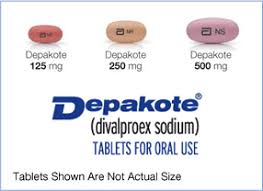DTaP Vaccine

The DTaP vaccine stands as an essential pillar of childhood immunization, safeguarding against three formidable diseases: Diphtheria, Tetanus, and Pertussis (commonly known as whooping cough). These ailments pose significant risks, particularly to infants and young children, potentially leading to severe complications or even fatality. By administering the DTaP vaccine, individuals not only shield themselves from these threats but also enhance public health and foster community immunity. Below is an elegant exploration of the DTaP vaccine:
Understanding the DTaP Vaccine
DTaP is an acronym representing:
D – Diphtheria
T – Tetanus
aP – Acellular Pertussis
This sophisticated combination vaccine is designed to immunize children against these three life-threatening diseases. It comprises inactivated components of the bacteria responsible for each illness, effectively prompting the immune system to generate antibodies without inducing the diseases themselves. The DTaP vaccine is generally administered in a series of injections during the formative years of a child’s life.
The Diseases Addressed by DTaP
Diphtheria:
Etiology: Diphtheria is instigated by the Corynebacterium diphtheriae bacterium.
Clinical Manifestations: This disease predominantly impacts the respiratory system, resulting in a sore throat, fever, and general malaise. A dense membrane may develop in the throat, obstructing breathing and swallowing. Diphtheria can lead to dire complications, including heart failure, paralysis, and mortality.
Transmission: The bacterium spreads through respiratory droplets released when an infected individual coughs or sneezes.
Tetanus:
Etiology: Tetanus arises from the Clostridium tetani bacteria, which typically infiltrate the body through wounds or injuries.
Clinical Manifestations: The condition is characterized by excruciating muscle stiffness and spasms, often commencing in the jaw (lockjaw). It can compromise the muscles responsible for respiration, potentially resulting in respiratory failure.
Transmission: Tetanus is not transmissible from person to person; rather, it is contracted through open wounds contaminated with the bacteria, which are frequently found in soil.
Pertussis, widely recognized as Whooping Cough, is an exceptionally contagious respiratory ailment instigated by the Bordetella pertussis bacterium. This condition is characterized by severe coughing episodes that may endure for weeks, often culminating in a distinctive “whooping” sound during inhalation. The ramifications of pertussis can be particularly grave for infants, potentially resulting in complications such as pneumonia, seizures, neurological damage, and even mortality.
The disease spreads effortlessly through airborne droplets emitted during coughing or sneezing, rendering it highly transmissible.
To protect children,
the DTaP Vaccine Schedule is meticulously crafted, comprising a series of five vaccinations that ensure long-lasting immunity:
– First dose: At 2 months of age
– Second dose: At 4 months of age
– Third dose: At 6 months of age
– Fourth dose: Between 15 and 18 months
– Fifth dose: Between 4 and 6 years
Following this foundational series, a booster shot of the Tdap vaccine, which offers protection against tetanus, diphtheria, and pertussis, is advised around the ages of 11 or 12 to maintain immunity into the teenage years.
The DTaP vaccine functions by introducing inactivated forms of the toxins produced by the Bordetella pertussis bacteria into the body. These innocuous components prompt the immune system to produce antibodies, preparing it to identify and combat the bacteria should exposure occur in the future. This mechanism exemplifies active immunity, wherein the immune system acquires the ability to defend itself against future infections.
The importance of the DTaP vaccine is paramount. It serves as a vital safeguard against severe diseases that could lead to enduring health complications or even death. Each of the three diseases—diphtheria, tetanus, and pertussis—can have devastating consequences for children, and vaccination remains the most effective strategy for prevention.
Herd Immunity: By immunizing a significant segment of the population, the transmission of these diseases can be significantly curtailed. This initiative serves to safeguard those who are particularly vulnerable and unable to receive vaccinations, such as infants who are too young or individuals with specific medical conditions.
Global Public Health: Across the globe, vaccination campaigns have led to a remarkable decline in the prevalence of these diseases. In regions lacking access to vaccines, however, outbreaks persist, underscoring the vital importance of immunization.
Possible Side Effects of the DTaP Vaccine:
As with all vaccines, the DTaP vaccine may elicit side effects, though the majority are mild in nature. Common reactions include:
– Redness, swelling, or tenderness at the injection site
– Fever
– Irritability or fussiness
– Decreased appetite
– Vomiting
While serious side effects are uncommon, they can occur, including severe allergic reactions (anaphylaxis). Symptoms of an allergic reaction may encompass difficulty breathing, swelling of the face or throat, and a rapid heartbeat. Should any of these symptoms manifest post-vaccination, prompt medical attention is imperative.
Who Should Not Receive the DTaP Vaccine?
Although the DTaP vaccine is recommended for most children, there are specific circumstances where it may be contraindicated:
– Severe Allergic Reaction: A child who has experienced a severe allergic reaction (anaphylaxis) to a previous dose of the DTaP vaccine or any of its components (such as diphtheria toxoid, tetanus toxoid, or pertussis) should refrain from receiving additional doses.
– Severe Illness: Children who are acutely ill (e.g., exhibiting a high fever or serious infection) may need to postpone vaccination until they have fully recovered.
– Seizures or Neurological Disorders: Children who have had seizures or severe neurological reactions following a prior dose of the vaccine should consult their healthcare provider to explore alternative options.

Conclusion
The DTaP vaccine stands as a vital safeguard against three grave and likely life-lesson illnesses. By stick to the put up vaccination plan for children, we not only shield their health but also bolster public health initiatives aimed at curbing the transmission of these diseases. Immunization represents one of the most powerful strategies to secure the well-being of future generations, playing an indispensable role in the eradication of preventable diseases from our society.




